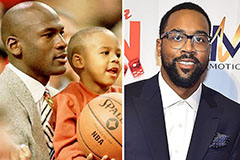Cutting-edge Solutions in Assistive Innovation for Visual Problems
The landscape of assistive technology for aesthetic problems is progressing swiftly, presenting an array of innovative services that boost accessibility and self-reliance. From innovative smartphone applications that help with navigating to wearable tools designed for real-time assistance, these devices are improving the experiences of those with aesthetic impairments. Furthermore, the assimilation of clever home technologies and educational resources has the prospective to cultivate better community engagement. The ramifications of these developments increase vital concerns about their ease of access and effectiveness in diverse contexts, warranting a closer exam of their more comprehensive influence.
Innovations in Mobile Phone Applications
Recently, advancements in smart device applications have actually considerably changed the landscape of assistive modern technology for individuals with aesthetic problems. These applications take advantage of the effective sensing units and capabilities of modern-day smartphones to provide individuals with tools that boost independence and ease of access in their lives.
Significant among these technologies are applications developed for things recognition, which use the mobile phone's electronic camera to determine things and offer spoken descriptions. Such attributes equip customers to navigate their settings much more properly, whether determining items in stores or finding individual valuables in the house. Furthermore, text-to-speech applications have actually improved substantially, enabling individuals to capture printed message through their gadget's video camera and receive split second audio comments, thus assisting in reading and comprehension.
Community-driven applications have actually promoted social communication and resource sharing among individuals with visual impairments, creating a supportive network that enhances their quality of life. Overall, smartphone applications have actually come to be crucial allies in advertising freedom and availability for individuals with visual impairments.
Wearable Devices for Navigation
Wearable devices for navigating have arised as a groundbreaking remedy for people with visual impairments, offering hands-free aid that boosts wheelchair and positioning. These devices generally utilize innovative innovations, including GPS, ultrasonic sensors, and fabricated knowledge, to offer real-time feedback and instructions to individuals as they navigate their setting.
One notable instance of wearable navigation technology is wise glasses, which can spot obstacles and relay auditory or haptic comments to the user, permitting reliable and risk-free movement in different settings. Various other gadgets, such as vests and belts geared up with sensors, can in a similar way notify customers of their surroundings by providing informs about close-by things or modifications in surface.
Furthermore, several wearable devices incorporate with smartphone applications, allowing customers to personalize their navigating preferences and get customized route tips. This personalization can substantially enhance the individual experience, encouraging individuals to travel with better self-confidence and independence.
As technology remains to develop, the possibility for wearable navigation devices to boost the quality of life for people with aesthetic impairments continues to be significant, leading the method for even more comprehensive and easily accessible environments.
Smart Home Innovation Combination

Furthermore, smart home appliances geared up with tactile user interfaces or acoustic feedback provide user-friendly communications that cater particularly to the needs of those with visual disabilities. Wise fridges can reveal their contents and expiration dates, while wise ovens can lead individuals via the food preparation process with audio instructions.
Home automation systems, such as clever doorbells and protection electronic cameras, provide satisfaction by enabling users to receive signals and accessibility live feeds using their mobile phones, boosting personal safety (AI-powered visual aids). Additionally, combination with mobile phones and tablets makes sure that individuals can handle their home environment from anywhere within their properties
As wise home innovation continues to advance, it holds the possible to transform the living experiences of individuals with visual disabilities, fostering self-reliance and boosting quality of life in a progressively linked globe.

Educational Equipment and Resources
Accessibility to reliable educational devices and resources is critical for people with aesthetic problems, as it empowers them to engage totally in their learning experiences. Numerous assistive modern technologies have been developed to enhance ease of access and foster independent learning.
Furthermore, instructional software program particularly made for visually impaired individuals provides functions such as high-contrast settings and customizable message dimensions. These tools suit varied understanding styles and make sure that students can tailor their instructional experience to their demands.
In addition, accessibility to electronic libraries and audio publications increases the variety of offered understanding products, making it possible for students to check out topics extensive without the constraints enforced by conventional print resources. Collaborative platforms that include accessibility attributes also facilitate group jobs, making certain that visually impaired pupils can contribute meaningfully together with their peers.
Area Support and Interaction
A durable network of neighborhood support and involvement is important for people eye care providers with visual problems, cultivating an inclusive atmosphere where they can flourish. Community organizations, local advocacy groups, and volunteers about his play a crucial duty in providing resources, information, and friendship, which are crucial for boosting the quality of life for those affected by visual impairments.
Involvement tasks such as workshops, social occasions, and support system not only assist in ability advancement however likewise promote social communication, lowering feelings of isolation. These efforts urge individuals to share experiences, challenges, and successes, thereby strengthening area bonds. Additionally, partnerships with local companies can cause better ease of access in public spaces, further incorporating individuals with visual impairments right into the community.
Innovation additionally enhances neighborhood interaction via on-line platforms that provide digital support system and resources, permitting people to link despite geographical obstacles. By taking advantage of both in-person and electronic options, communities can develop an extensive assistance network. Eventually, promoting cooperation amongst various stakeholders-- consisting of family members, instructors, and health care specialists-- ensures that people with aesthetic disabilities get the alternative support needed to navigate day-to-day life efficiently and with self-respect.
Final Thought
Innovative options in assistive technology for aesthetic problems significantly boost the high quality of life for people encountering these difficulties. The integration of mobile phone applications, wearable tools, wise home technology, and educational devices promotes higher independence and access.
The landscape of assistive technology for visual impairment is advancing quickly, offering an original site array of innovative options that boost access and self-reliance. Community-driven applications have cultivated social interaction and resource sharing amongst individuals with visual disabilities, producing a helpful network that boosts their high quality of life. Generally, mobile phone applications have come to be indispensable allies in advertising freedom and ease of access for individuals with aesthetic disabilities.
Numerous individuals with aesthetic disabilities are finding better freedom with the integration of clever home innovation.Innovative remedies in assistive modern technology for visual problems dramatically improve the quality of life for people facing these obstacles.
 Michael Bower Then & Now!
Michael Bower Then & Now! Jennifer Love Hewitt Then & Now!
Jennifer Love Hewitt Then & Now! Marcus Jordan Then & Now!
Marcus Jordan Then & Now! Shannon Elizabeth Then & Now!
Shannon Elizabeth Then & Now! Kane Then & Now!
Kane Then & Now!